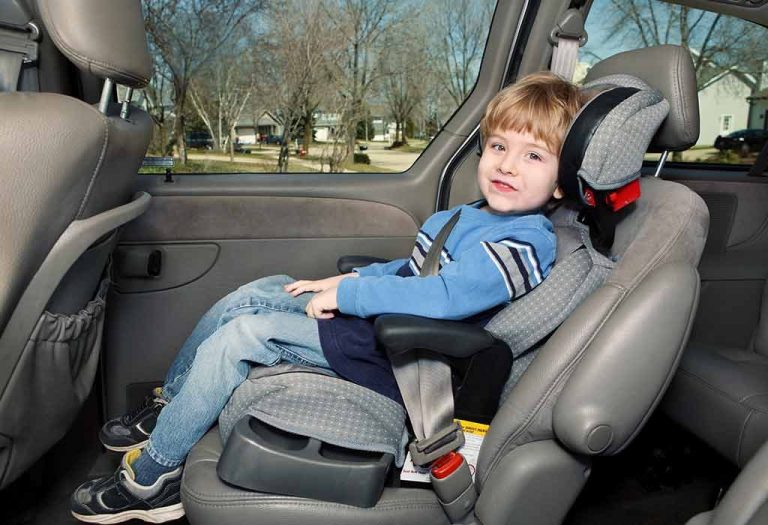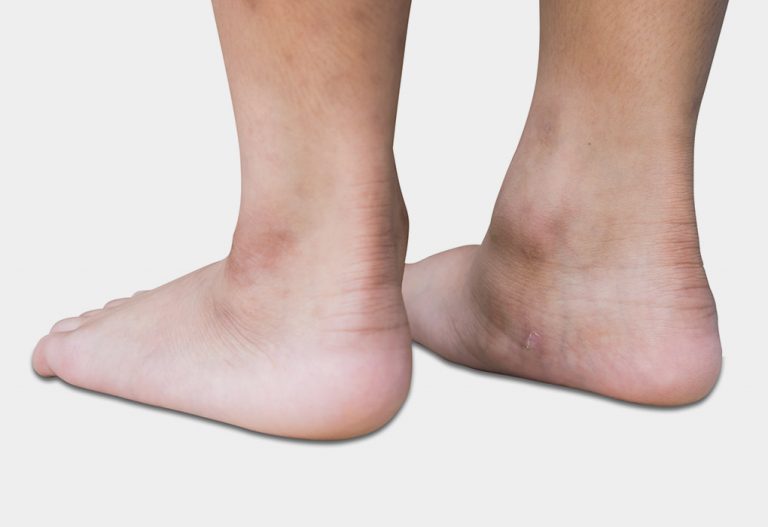When Can a Child Use a Booster Seat?
As a parent to a toddler, whenever you make your little one sit in his car seat, you may find yourself asking if he is ready to outgrow it and make the transition to a booster seat. So, when can a child use a booster seat? If your child’s weight and height are as per his age, then you might be considering buying a booster seat for him. But before you make the big investment, find out if your little one is ready for it. If your child shows signs of readiness, you need to learn if it is safe to keep children in a harnessed seat for long.
What Is a Booster Seat?
A booster seat is a seat that helps a child stay safe in a car. Unlike a car seat (rear-facing or forward-facing) that uses a five-point harness, a booster seat uses the seatbelt restraint of the car to keep a child secure. A booster seat lets a child sit on top of the seat and ‘lift’ them up to a height where the seatbelts lie across the strong bones and pelvis of the child and keep them secure. The seat belt is designed to help adults and the booster seat acts as the additional support to match the height of an adult. The transfer to a booster seat for your child is just like a preparation to sit on the seat like an adult until they are old enough.
Types of Booster Seats
There are essentially two kinds of booster seats that you can choose from for your child, once he reaches the right age.
1. Backless Booster Seats
These seats are easy to manoeuvre from one car to another. When using a backless booster, the car must have a seat that has a back which is high enough to give support to the rear of the head. The child’s ears must be below the top of the seat or the headrest.
2. High-Back Booster Seats
As the name suggests, a high-back booster seat has a high back, which helps a child sit upright. It is a great choice for kids and can help position the seat belt on the child accurately. A high-back booster seat is perfect to maintain the posture of kids when they fall asleep during long road journeys.
When Should You Move Your Child to a Booster Seat?
What age for a booster seat seems right? If you’re planning to make a move to a booster seat, you must find out if there’s a right age to do the same. The ideal age for a child to make the move to a booster seat is five. But many parents tend to buy a booster seat early. If you’re considering a booster seat for your toddler, there are some guidelines that you can refer to if you want to assess if your child is ready for the booster seat.
- Your child is at least five years of age and weighs at least 40 pounds.
- The child is mature enough to sit in the booster seat for the entire journey with the seat belt fitted across the shoulder and below the hips.
- The child should have outgrown the weight, height, and internal harness requirements of a five-point harness forward-facing or rear-facing car seat.
Difference Between Car Seats and Booster Seats
Car seats and booster seats are both safety devices designed to protect children in vehicles, but they serve different purposes and are used for different age groups. Here are some key differences:
- Age/Size: Car seats are for infants and toddlers, while boosters are for older children.
- Support: Car seats provide full support, while boosters raise the child for proper seat belt fit.
- Restraint: Car seats use harnesses, while boosters rely on the vehicle’s seat belt.
- Purpose: Car seats protect the child’s entire body, while boosters ensure the seat belt fits correctly.
Should You Consider a Booster Seat With a Five-Point Harness?
Keeping a child in a five-point harness seat has its own advantages. A five-point harness seat fits small children as well, and as your child starts using a booster seat they can move out of the secure seat position easily. But you must be careful when you make your child sit in a booster seat. When your little one is sitting in a booster seat, you must ensure that the shoulder belt is not behind their back or under their arm. If the child is uncomfortable then do not make the transition to a booster seat. If they are not comfortable sitting in a booster seat, stick to the car seat with a harness. There is no hurry to make the transition. Wait until your child outgrows the car seat and move them to a booster seat when they meet the statutory requirements and are old enough to understand the mechanics of sitting in the booster seat.
How to Install a Booster Seat
Booster seats are designed to raise a child in the vehicle seat so that the adult seat belt fits properly across the chest and hips. Here’s how to install one:
- Choose the right seat: Select a booster seat that fits your child’s size and weight and is compatible with your vehicle’s seat belt system.
- Position the booster seat: Place the booster seat in the back seat, preferably in the middle position, for maximum safety.
- Secure the booster seat: If your booster seat has a vehicle seat belt lock-off, use it to prevent the seat from moving during a crash.
- Buckle up: Help your child buckle the seat belt correctly. The lap belt should fit snugly across their hips, and the shoulder belt should fit snugly across their chest and shoulder, not their neck.
How Long Should You Use a Booster Seat?
It’s generally recommended to keep your child in a booster seat until they reach 4 feet 9 inches tall and are between the ages of 8 and 12 years old. However, the most important factor is ensuring the seat belt fits properly. The lap belt should lie snugly across the upper thighs, not the stomach, and the shoulder belt should lie snugly across the shoulder and chest, not the neck or face. If the seat belt doesn’t fit correctly without a booster seat, your child should continue to use one.
Choosing the Right Fit Booster Seat
If your child weighs over pounds and is still under the age of five, you might want to look for a harnessed car seat with a higher height and weight limit. You have several harness-to-booster seats available in the market today. They have a higher harness limit and later, can be used as a booster seat. This is ideal if you do want to spend twice on the same product. A harnessed car seat with a higher weight and height limit and a higher top shoulder strap will serve the purpose longer. The seat can be used longer in a booster mode too. You can now buy a car seat under your budget to keep your little one safely harnesses until he is ready to make the transition to a booster seat or perhaps longer.
FAQs
1. Can a child use a booster seat in the front seat?
While it’s generally safest for children to ride in the back seat, some situations may require them to sit in the front. If this is the case, ensure the front passenger airbag is deactivated or moved to the off position.
2. How do I know if my child is sitting correctly in their booster seat?
The lap belt should lie snugly across the upper thighs, not the stomach. The shoulder belt should lie snugly across the shoulder and chest, not the neck or face. Your child should sit upright in the booster seat with their back against the vehicle’s seat back.
3. Can a child use a booster seat with a lap-only seat belt?
No. Booster seats are designed to work with lap-shoulder seat belts. Using a booster seat with a lap-only belt can be dangerous and ineffective.
As mentioned above, you don’t need to move your child to a booster seat if he isn’t ready for it. As per the guidelines of the American Academy of Pediatrics, it is safe to keep a child in a rear-facing car seat until the age of 2. They can progress to a forward-facing car seat once they are over 22-30 pounds in weight. A booster seat is recommended only when they are over 40 pounds in weight and above the age of five years.
References/Resources:
1. Car seats and booster seats; National Highway Traffic Safety Administration; https://www.nhtsa.gov/vehicle-safety/car-seats-and-booster-seats
2. Child Passenger Safety (Pediatrics); American Academy of Pediatrics; https://publications.aap.org/pediatrics/article/142/5/e20182460/38530/Child-Passenger-Safety; November 2018
3. Car Seats: Information for Families; American Academy of Pediatrics; https://www.healthychildren.org/English/safety-prevention/on-the-go/Pages/Car-Safety-Seats-Information-for-Families.aspx
4. Booster Seats for School-Aged Children; American Academy of Pediatrics; https://www.healthychildren.org/English/safety-prevention/on-the-go/Pages/Booster-Seats-for-School-Aged-Children.aspx
5. Ma. X, Griffin. R, McGwin. G, Allison. D, et al.; Effectiveness of Booster Seats Compared With No Restraint or Seat Belt Alone for Crash Injury Prevention (Academic Emergency Medicine); National Library of Medicine; https://pmc.ncbi.nlm.nih.gov/articles/PMC3798005/; September 2014
6. Pitt. T, Howard. A, HubkaRao. T, Hagel. B; The effectiveness of booster seat use in motor vehicle collisions (Accident Analysis & Prevention); Science Direct; https://www.sciencedirect.com/science/article/abs/pii/S0001457521003274; September 2021
7. Booster Seats; Harborview Injury Prevention & Research Center; https://hiprc.org/outreach/booster/
Also Read:
Tips for Travelling with Children
The Right Age for Your Kid to Face Forward in a Car Seat
Tips to Handle Jet Lag with Babies, Toddlers and Kids
Was This Article Helpful?
Parenting is a huge responsibility, for you as a caregiver, but also for us as a parenting content platform. We understand that and take our responsibility of creating credible content seriously. FirstCry Parenting articles are written and published only after extensive research using factually sound references to deliver quality content that is accurate, validated by experts, and completely reliable. To understand how we go about creating content that is credible, read our editorial policy here.






















